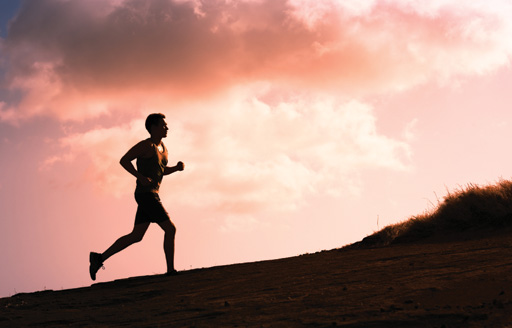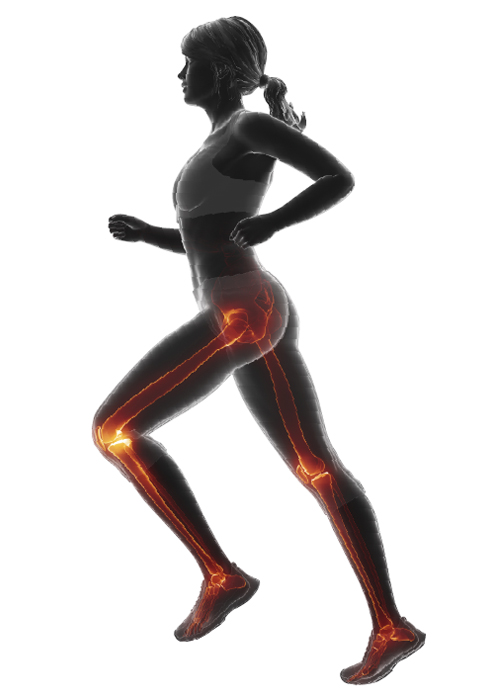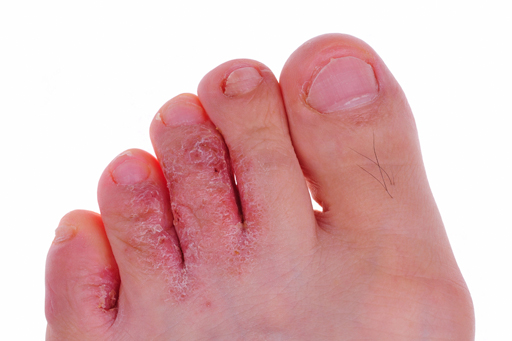Fitness & wellbeing: An uphill struggle
In Clinical
Follow this topic
Bookmark
Record learning outcomes
Research shows that, although adults are not getting any fatter, they are refusing to become more active. How can pharmacy help spread the message that fitness is not a fad?

Learning objectives
After reading this article you should be able to:
- Understand the impact environmental factors are having on obesity levels
- Provide advice on exercise and diet
- Help those experiencing minor sporting injuries
Obesity is a critical issue for the nation’s health – it costs the NHS over £5bn each year and is closely linked with type 2 diabetes and hypertension, both growing health concerns.
Since 2001, the proportion of adults who are overweight or obese has actually changed little and now stands at 61 per cent, but a report published in December 20171 claims that, on average, only 62 per cent of adults in England meet national physical activity guidelines of at least 150 minutes of moderate activity or 75 minutes of vigorous activity per week.
On the plus side, the report found that the proportion of adults meeting these aerobic activity guidelines was similar to the 2012 figures for men (67 per cent) but had increased for women (from 55 per cent). So does this tie in with the accepted view that the UK is fatter, less healthy and less active than ever before?
Dan Jones, clinical physiotherapist, musculoskeletal specialist and an adviser to natural remedies company Puressentiel, says it does. “What is scary is the fact that the latest research shows that fitness is considered a chore, with almost half of 25 to 44-year-olds (45 per cent) admitting they did not enjoy working out.
As a result, only one in five of 25 to 34-year-olds (20 per cent) and a quarter of 35 to 44-year-olds (25 per cent) are getting enough aerobic activity to stay healthy.”
The statistics may show that the proportion of adults who are overweight or obese has remained relatively static up until now, but Keith McNiven, British wrestling champion, personal trainer and director of Right Path Fitness, says what is worrying is that “it is estimated that by 2050 over half the population will be obese – with a body mass index (BMI) of 30 and above”.
So apart from motivation, what else is stopping more people meeting the national physical activity guidelines?
Key facts
- Adults spend up to six hours a day, on average, engaging in sedentary activities
- One theory why people aren’t exercising enough is because they have conditioned ourselves to avoid discomfort
- There is a direct correlation between an individual’s education, household income and local area deprivation, and their level of physical activity
Common hurdles
Dan Jones says research findings suggest a direct correlation between an individual’s education, household income and local area deprivation, and level of physical activity. “Those in a higher socio-economic position have increased levels of physical activity,” he says. “Only 12 per cent of adults who are degree- educated are physically inactive, but in contrast, those with no qualifications are three times as likely to take little or no exercise.”
According to Keith McNiven, studies have also shown that the environment can have a major impact on overweight and obesity levels. “Environmental factors known as ‘obesogenic environments’ are said to have an astronomical effect on weight”, he says. “These are places, often urban, that encourage unhealthy eating and inactivity.” Lifestyle factors also play a big part.
“Adults spend up to six hours a day on average engaging in sedentary activities – from reading, to watching TV and other low-energy pastimes,” says McNiven. “There is also an increase in desk jobs and working hours, resulting in less opportunity for exercise throughout the day. Not only that, but thanks to the drastic improvements in technology, leisure time is increasingly spent indoors. Similarly, a more rigorous health and safety culture means time outdoors being active has decreased from decade to decade.”
Another popular belief about why people aren’t exercising enough is that people have conditioned themselves to avoid discomfort, says Well pharmacist Sadik Al Hassan. “That could include the sweating, strains or callouses associated with exercise,” he says.
“The idea revolves around the concept that we have built our lives to be comfortable and our perception and/or experience of exercise doesn’t conform to that. Patients also report that they find it difficult to plan in the time for exercise, build regular exercise routines, or maintain levels of activity over enough weeks to see improvements.”
Obesity plateau explained – or not?
Despite this seeming reticence to ‘move more’, how do we account for the fact that obesity levels in the UK are relatively static? Keith McNiven says this could be down to a boost in the trend of healthy living. “From vegetarianism to veganism and health foods in general, the online world has been promoting living a healthy lifestyle more than ever before,” he says.
“There are more resources on healthy living available at the click of a button, should we choose to educate ourselves. Similarly, the public is more conscious than ever about being vegan or vegetarian.
“Young people in particular are switching to plant-based diets for health and environmental reasons and thanks to an increasing compassion for animals and their welfare, all of which could be a contributing factor as to why obesity levels aren’t increasing as rapidly as we are led to believe.”
On the other hand, Sadik Al Hassan warns that, while the Health Survey for England shows that the proportion of the population that is overweight or obese has stayed the same at roughly 61 per cent, “we have to take into account that the population in England has grown since 2001, so despite the wealth of health advice on diet and exercise, more people are becoming overweight and obese to keep us at that rate”.
There may be many patients who have been helped onto the path of healthier living, he says, “but the fact that the level has remained static with a rising population means we need to do much more if we hope to reverse this trend”.
Supplementary opportunities
Sports supplements and related products have a role to play in boosting performance and recovery and helping avoid injury. According to the market research company Euromonitor, UK sales of sports nutritionals will reach £471 million in 2018 (up from the £301 million in 2013), while a YouGov survey found that one in 10 men used a sports supplement at least once a week during 2012.
“The sports nutrition market is quite saturated but there is an increasing consumer interest in proven natural products,” says Cardiff Blues physiotherapist Dan Jones. “This provides an opportunity for pharmacies to expand their sports categories with, for example, evidence-based natural remedies for muscle and joint pain.”
Well pharmacist Sadik Al Hassan predicts this growing market will become increasingly valuable in the future and says pharmacy already has an important foothold in it. “Providing nutrition advice to patients is part of the normal working day in pharmacy, so sports nutrition is a natural extension of this.”

Pharmacy’s role
Exercise and diet are two of the most important areas that a pharmacy can help patients with. “Regular exercise and maintaining a balanced diet can make a big difference, not just in terms of weight loss, but also in terms of mood,” says LloydsPharmacy pharmacist Rajinder Ram. Making a successful campaign out of these topics can save lives and reduce the chances of premature death, adds Sadik Al Hassan.
“We ran a campaign called ‘Eat well, stay well on the Mediterranean diet’ in our store and had conversations with over 500 at-risk patients to help them reduce the risk of heart attack and stroke,” he says. “Our new campaign, ‘Love exercise, love your heart’ helps people understand the role that 150 minutes of moderate activity plays in keeping their heart healthy. So far we have talked to over 200 people and even given them access to some local exercise experts to help them stay active.”
Common sports injuries
Knowing how to advise your customers to avoid, treat and manage a range of sports injuries can help them steer clear of long-term muscular damage and pain.
Sprains and strains
Most sprains and strains can usually be treated by using the PRICE technique of protection, rest, ice, compression and elevation, and should improve within six to eight weeks – although severe muscle strains may take longer. Topical NSAIDs, which offer an anti-inflammatory action together with pain relief, and hot and cold products are other options to help with muscle and joint aches and pains arising from sports injuries. While oral or topical analgesics can be used to ease discomfort, customers should be advised to see their GP if in severe pain or their injury
is not improving or even getting worse.
Joint health
Joint injuries can occur when a joint is taken outside of its comfortable range of motion, so having stronger stabiliser muscles and increased flexibility will lessen the likelihood or severity of an injury. Maintaining a healthy weight can also be beneficial on joints. One study claimed that losing about a pound of weight delivers almost a four pound reduction in knee joint load for each step.
Acute knee injuries include runner’s knee (patellofemoral pain syndrome). This is when the impact of running irritates the site where the patella rests against the femur, resulting in sharp or dull pain and swelling. A knee injury can increase the chances of developing and aggravating osteoarthritis in many people, so anyone experiencing knee pain should allow enough time for full recovery and seek advice from their GP if symptoms persist.

Blisters
Blisters are the skin’s way of protecting itself from excessive heat, moisture and friction. Although painful, most blisters will heal on their own unless they become infected, but prevention by covering tender spots with a friction-resistant dressing or plaster is preferable. Specialist blister plasters are available, which claim to aid rapid healing by absorbing the fluid, protecting skin from bacteria and helping relieve the pain of friction and pressure.
Customers with diabetes need to be particularly vigilant when checking for blisters, as their foot injuries take longer to heal due to poorer blood circulation. Complications can result.
Tennis elbow
Tennis elbow (lateral epicondylitis) is a self-limiting condition usually caused by overuse of the muscles attached to the elbow that straighten the wrist, which leads to pain around the outside of the elbow when bending, extending or lifting the arm. If these muscles and tendons are strained, tiny tears and inflammation can develop near the lateral epicondyle on the outside of the elbow.
Despite its name, tennis elbow is caused by any activities that place repetitive stress on the elbow, such as playing the violin or decorating, as well as racquet sports.
Avoiding the activity should help symptoms improve, as will applying a cold or gel compress to the area. Paracetamol can help with the pain and ibuprofen will reduce any swelling, but customers should consult their GP if the condition persists.
Athlete’s foot
The itchy, scaly skin of athlete’s foot will affect around a quarter of all adults at some time in their lives. Caused by a combination of bacteria and fungi, it creates dry and cracked skin – usually between the toes – as well as blisters.
Athlete’s foot is commonly caught in shared swimming pools and showers. One way to try to prevent it is to wear flipflops in wet, communal areas and avoid walking around with bare feet or sharing towels or footwear with anyone else with the condition.
If your customer has athlete’s foot, advise them to treat the infection immediately to prevent it spreading and causing other problems such as fungal nail infections. It is also important to make sure they understand the importance of good foot hygiene and they should be advised accordingly – for instance, keep feet clean and dry at all times, avoid sharing footwear and choose breathable footwear.
Athlete’s foot responds well to topical antifungal treatments. Some creams may contain steroids, so should be avoided for the treatment of young children and women who are pregnant or breast-feeding without prior consultation with their GP.

Verrucas
Verrucas are often caught from the wet floors in changing rooms and swimming pools. Verrucas manifest as warts growing up into the soles of the feet with a black dot in the centre surrounded by a harder, white area.
It is common to have more than one verruca at a time, and they can become increasingly painful the longer they are left. Up to 80 per cent of verrucas resolve themselves within about two years but OTC treatments can treat them much faster. Advise customers to use such treatments with care because they are generally tissue destructive.
Many contain salicylic acid, which breaks down the verruca, so should not be applied to healthy skin (this can be shielded with petroleum jelly of surgical tape). Cryotherapy treatments which freeze the verruca are also available over the counter, but again all surrounding healthy tissue must be protected.
If a customer would rather not tackle a verruca themselves, recommend they see a podiatrist.
Time outdoors being active has decreased from decade to decade
